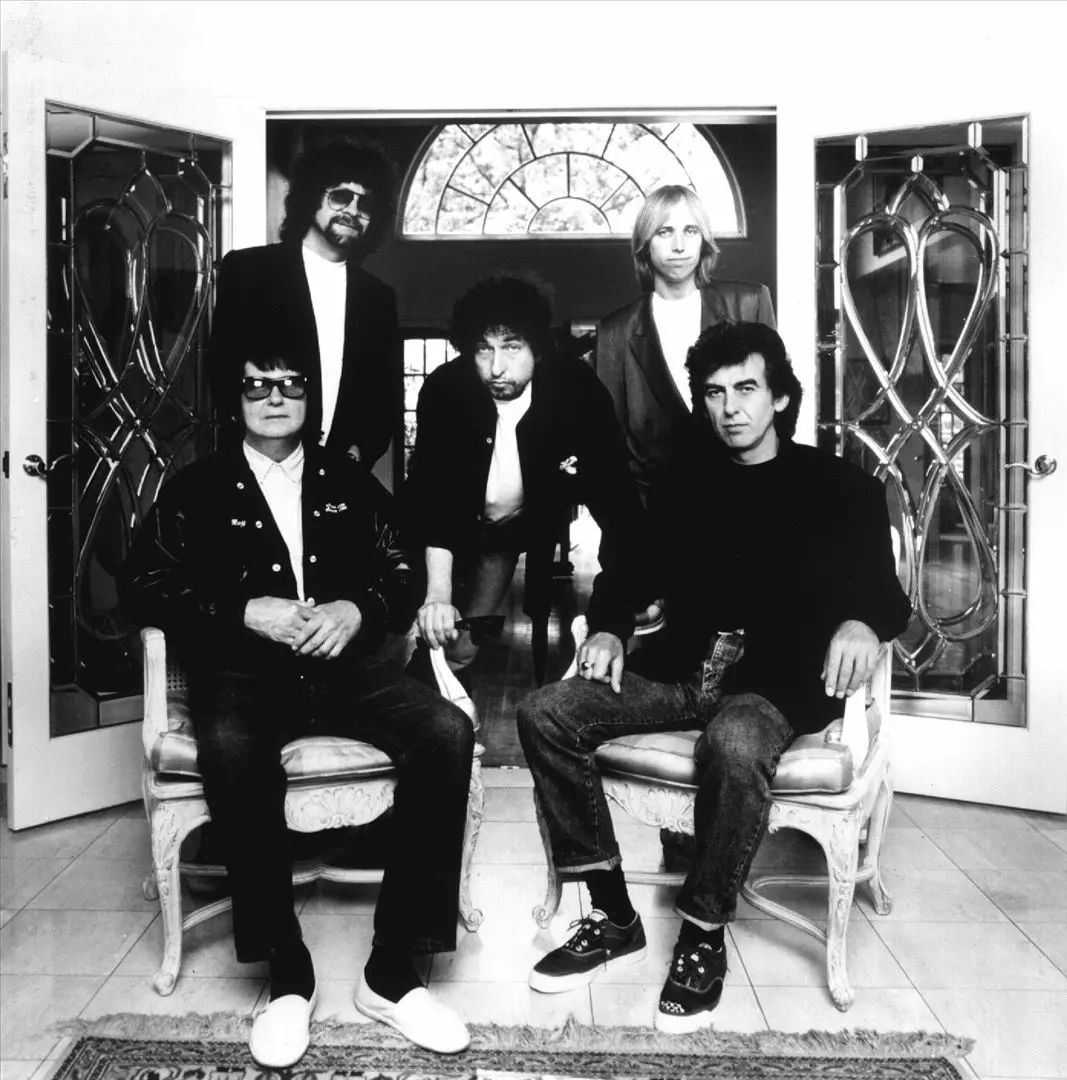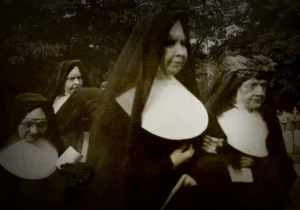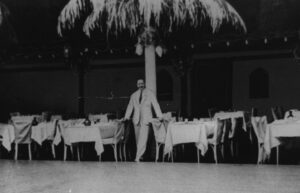
I admit that I am not a big social media participant. I worry not about the number of my “friends”. I “follow” others only if I personally know them. I do not tweet (or X-tweet now). I do not check my social media accounts hourly, daily, or many times even weekly.
Despite this lack of attention, a recent post from an actual friend caught my eye. The entire post consisted of: “I am looking for a Roy Orbison article.” That’s it. Nothing more. No context. No reference to an article about Roy Orbison’s life, music, career, or otherwise. Responses to this post by others included comments about Roy Orbison’s unique voice, hit songs, and his musical abilities, but no one inquired about the nature of the article sought by my friend.
Without more, I will rise to the challenge. Here is a Blog article about Roy Orbison for my friend Dave. With minimum digging, Roy Orbison’s life offers a tapestry of riches for any writer. Roy’s gift of a guitar from his father at age 6 and confirmation that he would pursue a life in music by age 7 could be a good article. Roy’s early Texas influences including Country music star Lefty Fazzell, who later served as the namesake for Roy’s character as Lefty Wilbury, could be grist for a good story. Orbison’s personal tragedies of loss of his wife and two of his children in horrible accidents remains prime canon fodder for any tail. Hanging out with Elvis, Carl Perkins, Jerry Lee Lewis and Johnny Cash for three years at Sun Studios, including Elvis loaning Roy his purple Cadillac to impress Roy’s date, represents writer’s gold.
Instead, our story about Roy Orbison begins in the pubs and wedding halls in northwest England in the late 1950s. Sixteen year old guitarist John Lennon plays with the Quarrymen when fifteen year old Paul McCartney joins the band for a few numbers during each gig. Paul’s guitar playing improves to the point where he gets a solo on “Guitar Boogie”. However, the fifteen year old proved too nervous to perform well on stage on his solo forcing the band to reach out for fellow fifteen yer old guitarist George Harrison to join them. The core of the Beatles became cast by late 1957.
The Quarrymen played local parties, wedding receptions and at pubs in Liverpool and Manchester during 1958 and 1959. Trying to gain traction, they also performed as Johnny and the Moon Dogs, the Silver Beetles, and the Silver Beats at this time. John Lennon and bassist Stuart Sutcliffe coined the term “Beatles” by combining the Silver Beetles and Silver Beats.
During this period, the band, under whatever name they used, could not keep a drummer. Paul McCartney even played drums for a few shows considering himself pretty good at it. Apparently, the rest of the band disagreed with a search continuing for a drummer. In August 1960, the band’s manager and booking agent, Allen Williams, convinced the band to travel to Hamburg, Germany to play for a while as Williams previously had success with sending other bands abroad. One problem: the band still lacked a drummer. Williams recruited drummer Pete Best from a different band and sent him along to Hamburg as the Beatles’ new drummer.
Between 1960 and 1962, the Beatles split their time between Liverpool and Hamburg. John Lennon credits the young German audiences with pushing the band’s development. The Germans demanded that these bands play lengthy sets and play loud. That dynamic forced Lennon-McCartney to create more music to feed the demand. As Lennon put it: “We really had to hammer.”
Of course, the Beatles big break came in January 1962 when record store owner Brian Epstein “discovered” the Beatles in Liverpool signing them to a five year management contract. 1962 became the year of change for the Beatles. In April, bass player Stuart Sutcliffe died suddenly of a brain hemorrhage. In June, the band got a shot at recording, being teamed up with producer George Martin. The Beatles recorded various singles including “Love Me Do” and “PS I Love You”. In August, Martin let Epstein know that drummer Pete Best was holding back the band. Epstein immediately fired Pete Best thereby relegating him to an answer to trivia questions for generations to come. Epstein turned to the son of a local confectioner, Ringo Starr as the new drummer. August 1962 – the Beatles as we know them.
January 1963, the Beatles release “Please Please Me” which shot up to No. 1 on the U.K. charts. The Beatles followed a string of Top Ten hits in the U.K. during 1963 and became a touring sensation in Great Britain.
While the Beatles evolved and started to find their groove, back in the States, in 1960, Roy Orbison — you remember Roy Orbison — this article is about Roy Orbison — wrote and pitched “Only the Lonely” to Elvis Presley and the Everly Brothers. After they each rejected the song, Orbison recorded it himself. “Only the Lonely” charted out as No. 2 in the U.S. and No. 1 in the U.K. and Australia. Between 1960 and 1963, Roy Orbison pumped out a series of hits including “Running Scared”, “Crying”, and “Dream Baby” which each raced up the charts in the U.S. and the U.K. “Pretty Woman” was added to the mix. By 1963, Roy Orbison was established both in the States and across the pond.
With their own freshly minted No. 1 songs now in hand in 1963, the Beatles planned a U.K. tour with Duane Eddy billed as the top performer. Eddy was pulled from the tour with Roy Orbison asked to take on the top billing spot to tour with this new group, the Beatles. Orbison arrived in England having never heard of the Beatles or their songs. Roy and the Beatles met for the first time backstage before their first scheduled performance.
Orbison asked “What’s a Beatle, anyway?” John Lennon tapped him on the shoulder and responded “I am”. This interaction began the unlikely friendship between Roy Orbison and the Beatles.
The Beatles and Orbison discussed the order of performance for the show with Orbison stating that he would gladly play first and give “top billing” to the up and coming Beatles. The Beatles watched in awe as Orbison, dressed in his trademark performance black clothes, strode to the center of the stage with his guitar and simply played and sang. He did not move from the center stage position. He did not dance around. He just performed. This approach was the antithesis from what the Beatles learned in Hamburg which demanded high energy and high volume songs. After the tour, the Beatles remained amazed that Roy Orbison so captivated the crowd while simply standing still in one spot on the stage.
The audience roared with applause for Roy Orbison. Orbison played encore after encore with the crowd chanting “We want Roy” every time he exited the stage. After the fourteenth encore, John Lennon and George Harrison grabbed Orbison by the shoulders and told him that they would not let him go back out for a fifteenth encore as the Beatles had to get on the stage.
During this tour, before one show, Orbison lost his black framed glasses. He grabbed his dark prescription sunglasses, also set in large black frames, for his set and realized he liked using the sunglasses better with the spotlights. Thereafter, Roy always performed with his dark sunglasses regardless of venue.
Bruce Springsteen inducted Roy Orbison into the Rock and Roll Hall of Fame in 1987. In tribute, Springsteen concluded his speech as follows: “I wanted a record with words like Bob Dylan that sounded like Phil Spector – but, most of all, I wanted to sing like Roy Orbison. Now, everyone knows that no one sings like Roy Orbison.” We all knew the incredible range of Roy Orbison’s voice. Now we can better appreciate how Roy Orbison and George Harrison so easily teamed up in the Traveling Wilburys in the late 1980s.
I have learned with Estate Planning clients that everyone has their own story with unique and unexpected interactions during the journey of their lives. Perhaps we do not have chart topping musical hits or perhaps we do not meet the Beatles. Yet, these interactions and relationships remain important to us. Some clients wish to utilize their estate plans to recognize special events or relationships in their lives. Clients may memorialize such events with a modest distribution or donation to a deserving cause in the name of a special person. The Will or Living Trust could simply include a statement of the importance of the underlying event. For these clients, when we prepare to sign the myriad of documents in their Estate Plan, without failure inquire if these token or special gestures are properly included in their documents. Events along the journey for each of us matter as does an article about Roy Orbison for my friend Dave.




